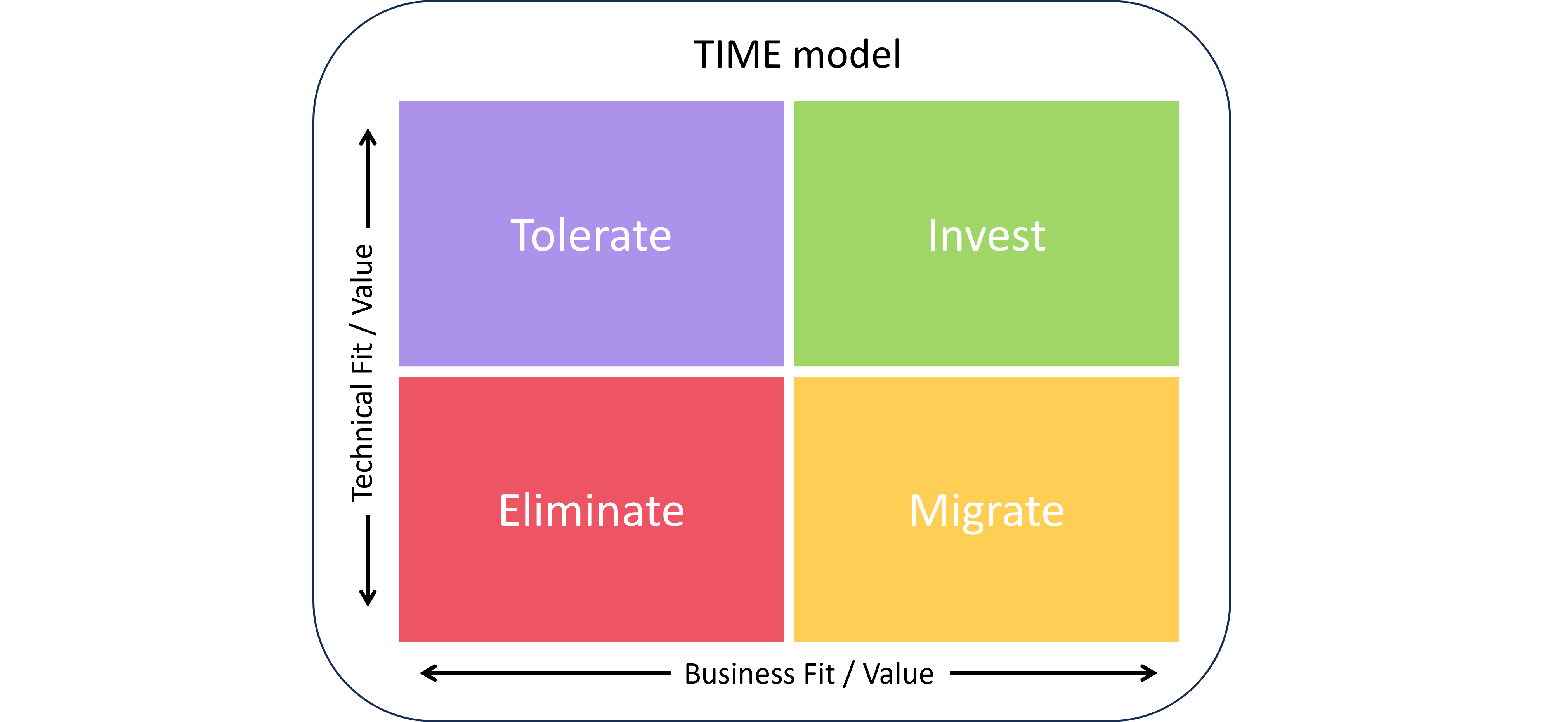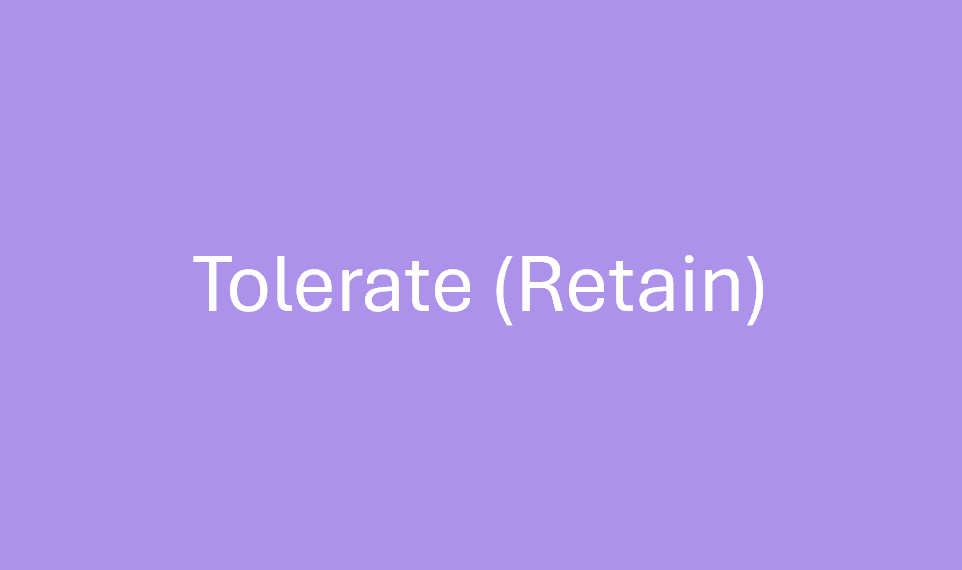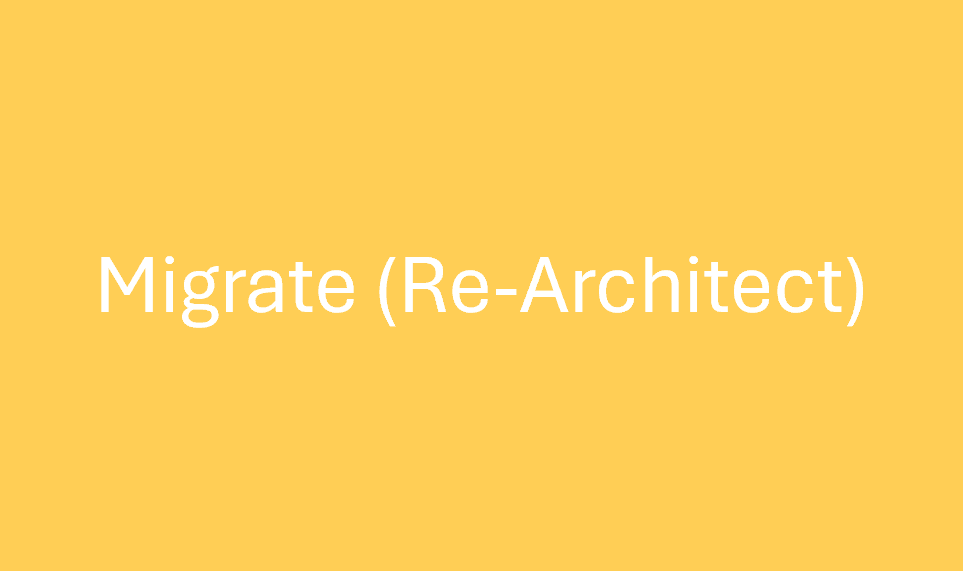The Application Portfolio is a comprehensive inventory of all applications used in UCD, including description, hosting model, development types, ownership roles, and underpinning technologies. This information is being captured through engagements with units, institutes, and schools and colleges, and is ongoing work in progress.
Application Portfolio Management is a structured approach to assessing and optimising the Application Portfolio, evaluating the Business Value and Technical Fit (how well each application meets business/functional and technical requirements) to inform and evidence rationalisation recommendations.
Within UCD we are using the TIME framework which is a widely used across Higher Education and other organisations to assess their Application Portfolio.
For further information on how Business Value and Technical Fit is determined, see UCD Guide to Business Value and Technical Fit Scoring

TIME framework
The TIME Framework is a strategic tool used primarily for IT portfolio management. Its purpose is to help organisations evaluate and categorise their existing applications - based on their Business Value and Technical Fit.
The acronym TIME stands for:
- Tolerate - Applications with a high technical fit but a low business value. While they may not align strongly with strategic business objectives, they are technically sound and therefore not prioritised for immediate replacement or decommissioning.
- Invest - Applications with a high business value and a high technical fit. They are critical to the University's operations and play a significant role in achieving strategic business objectives. These applications are typically of high quality, widely used, and support key business processes on a daily basis.
- Migrate - Applications with a high business value but a low technical fit. While they support important business functions, their technical limitations - such as poor performance, lack of scalability, or outdated architecture - make them unsustainable in the long term.
- Eliminate - Applications with low technical fit and low business value. These systems no longer adequately support business needs and often pose operational or security risks due to outdated or inefficient technology.

Tolerate > Retain
Applications in the Tolerate category demonstrate a high technical fit but a low business value. While they may not align strongly with strategic business objectives, they are technically sound and therefore not prioritised for immediate replacement or decommissioning.
These applications are typically retained in their current state because the cost, complexity, or disruption associated with replacement or enhancement outweighs the potential benefits. The decision to tolerate is often pragmatic—postponing change until a more suitable time or resourcing becomes available.

Invest > Reinforce
Applications in this category exhibit a high business value and a high technical fit. They are critical to the University's operations and play a significant role in achieving strategic business objectives. These applications are typically of high quality, widely used, and support key business processes on a daily basis.
The decision to continue investing in such applications is based on their potential to deliver further value—whether through increased efficiency, enhanced capabilities, or support for emerging business needs.
Ongoing investment may involve upgrading the application, broadening its adoption across the University, or deepening its integration with other systems to maximise its utility and impact.

Migrate > Redesign
Applications in this category have a high business value but a low technical fit. While they support important business functions, their technical limitations—such as poor performance, lack of scalability, or outdated architecture—make them unsustainable in the long term.
The decision to migrate or redesign these applications is typically driven by the need to enhance technical capabilities, reduce operational risks or costs, and ensure alignment with the University's broader IT strategy—often through the adoption of more modern, cloud-based solutions.
Redesigning or migrating an application is often a complex undertaking that requires thorough planning, stakeholder engagement, and risk management to minimise disruption to critical business operations.

Eliminate > Retire
Eliminate (Retire)
Applications in the Eliminate category demonstrate low technical fit and low business value. These systems no longer adequately support business needs and often pose operational or security risks due to outdated or inefficient technology.
The decision to retire such applications is typically motivated by the desire to reduce costs, streamline the IT environment, and eliminate unnecessary complexity or risk.
Although elimination is often necessary, it can be complex. Careful planning is required to address system dependencies, manage data retention or migration, and ensure a smooth transition for affected users.
UCD IT Services
Computer Centre, University College Dublin, Belfield, Dublin 4, Ireland.Contact us via the UCD IT Support Hub: www.ucd.ie/ithelp